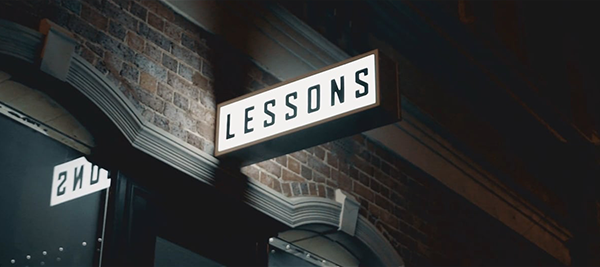A New Sensibility
Introduction
Since our last meta-analysis of public opinion research on attitudes towards criminal justice issues was published in August 2014, there has been a great deal of public discussion about the crisis of mass incarceration, and an unprecedented number of reforms have been enacted by states in every region of the country. Some of these reforms were voted into law by public referenda; others came about through the legislative process. Just to give the reader a sense of the scope of these changes, in 2014 and 2015, 16 states created or expanded opportunities to divert people away from the criminal justice system, 29 states took significant steps to reduce their prison populations, six states placed limits on solitary confinement, and 32 states established supports for individuals reentering the community after incarceration.3 Although little was accomplished by the legislative branch at the federal level in spite of bipartisan support for reform, the executive branch implemented important changes, signaling a move away from federal policies based on punishment and retribution. These included a record number of sentence commutations by President Barack Obama for people serving lengthy sentences for drug convictions4 and a ban on solitary confinement for juveniles in federal prisons.5 This relatively rapid about-face after four decades of increasing punitiveness has been met by little in the way of a public backlash. Except for some resistance to some specific measures from local police and prosecutors, recent surveys show that most Americans, including voters in the most conservative states, are on board.
This report is based on a review of about 50 public opinion surveys and polls, most of them conducted between June 2014 and June 2016. Many of them are based on state rather than national samples, reflecting the fact that most of the action has been at the state level. The research included covers American attitudes towards a range of policy issues that comprise the criminal justice reform agenda. By looking at the research holistically, we can see a definite pattern emerging as Americans’ attitudes towards crime, punishment, prevention, rehabilitation, and reintegration evolve towards what some scholars are describing as a new “public penal philosophy away from a simplistic and one-dimensional emphasis on ‘toughness’ and towards a focus on effective, compassionate, and just goals.”6 A group of researchers who conducted an important study of Texas voters’ attitudes towards various criminal justice reforms believes the results of their study and others “suggest that a transformation in Americans’ sensibility about corrections may be occurring”:
Three core elements characterize this new sensibility about corrections. First, in policy choices, prison no longer automatically trumps other options, whether in how to sentence offenders or where to devote scarce resources… Second, offenders are no longer uniformly objectified and vilified as “the other” and seen as creatures having no worth… Third, and perhaps most important, offenders are now conceptualized as varying in risk level.7
The research also points to a number of longstanding and difficult challenges advocates still face as they push for meaningful and far-reaching change. These include the racialization of crime, the unhelpful dichotomy in the public discourse between “violent” and “nonviolent” crimes, and the American public’s tendency to attribute crime to individual rather than systemic causes. But clearly there is reason to be optimistic about the continuing process of reform. This is the time to be pro-active in promoting real solutions to the crisis of mass incarceration that are based on the values of justice, opportunity, voice, redemption/second chance, and community.
Methodology
The public opinion section of this report is based on a meta-analysis of attitudinal tracking surveys and recent public opinion studies by nationally known and reputable research organizations, media outlets, and issue groups. Most of the data examined are publicly available; some come from proprietary research that was made available to The Opportunity Agenda for the purposes of this report. We reviewed original data from more than 50 public opinion studies (see Appendix). These studies meet The Opportunity Agenda’s standards and best practices for quality and objective public opinion research, including appropriate sample size and a methodologically sound design.
Because this scan investigates existing opinion research, we are limited by the data in our ability to analyze the views of all demographic groups on all issues. Whereas surveys often include adequate samples of African Americans and more recently, Latinos, to disaggregate their views, this is generally not the case with Asian Americans, Native Americans, and other groups. Wherever the data allowed, we have analyzed separately and together the views of each identifiable demographic group for this report.
Since opinion research has largely adopted racial categories utilized by the federal government, this report uses these categories as appropriate. The categories are defined as follows:
- White: any person who self-identifies as white only and non-Hispanic
- Black: any person who self-identifies as black only
- Hispanic: any person of any race who self-identifies as Hispanic
- Asian: any person who self-identifies as Asian only
3 Rebecca Silber, Ram Subramanian, and Maia Spotts, “Justice in Review: New Trends in State Sentencing and Corrections 2014–2015,” The Vera Institute, May 2016.
4 Ibid., p. 6.
5 Juliet Eilperin, “Obama bans solitary confinement for juveniles in federal prisons,” The Washington Post, January 26, 2016, https://www.washingtonpost.com/politics/obama-bans-solitary-confinement-for-juveniles-in-federal-prisons/2016/01/25/056e14b2-c3a2-11e5-9693- 933a4d31bcc8_story.html.
6 Kevin M. Drakulich and Eileen M. Kirk, “Public Opinion and Criminal Justice Reform: Framing Matter,” Criminology & Public Policy 15 (1), 2016.
7 Angela J. Thielo, et al., “Rehabilitation in a Red State: Public Support for Correctional Reform in Texas,” Criminology & Public Policy 15(1), 2016.



